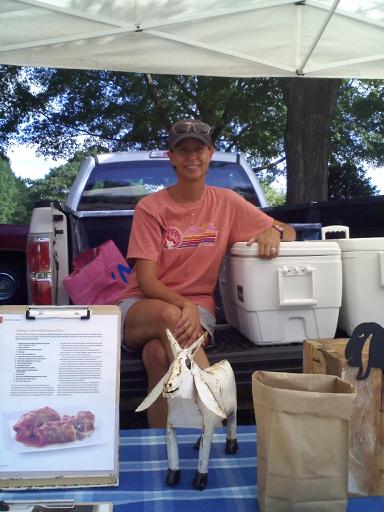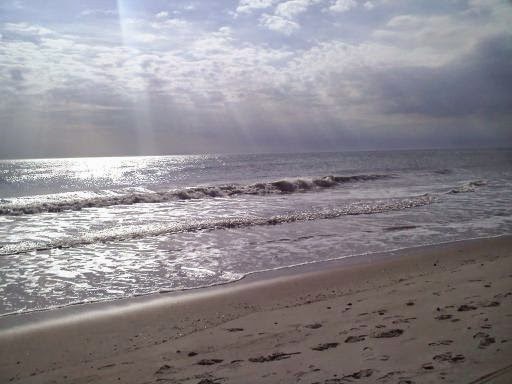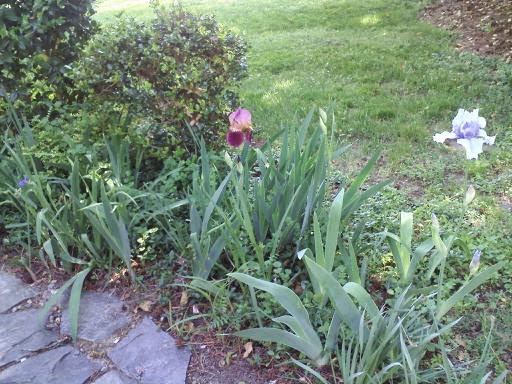Over the years since 1995, Madoff, as often said in the media these days, made steady annual returns - on which one paid ordinary income taxes, not capital gains taxes. The rates of return were unspectacular, especially when compared with the returns made by many hedge funds and, during many years, by mutual funds. But on an annual basis Madoff didn’t lose money, which was a major plus. The idea that he made money every month, however, is misleading. There certainly were some months when he lost money, and there were months when he made very little if anything, say a quarter or a half a percent. There were also months when he made, say, a percent and a half or two percent, or sometimes even a bit more.
The monthly variations made the whole deal look Kosher, at least to an amateur, as did the variations in annual returns. On the all important after-tax basis, the annual returns were generally between seven and ten percent. They therefore were probably not much more than, and often were certainly much less than, the annual returns obtained by investors who bought stocks or mutual funds in order to make capital gains. For capital gains are taxed at much lower rates than the more-than-one third rate applicable to ordinary income, plus principal invested in stocks and mutual funds appreciates tax free - so one gets appreciation upon appreciation, as well as on original, tax free appreciation of principal - until the investment is cashed in, in layman’s language. (One also can’t help remembering that hedge fund managers who were making hundreds of millions or billions per year - one recently made $1.7 billion in a single year - paid a tax rate of only 15% on their earnings.)
Also, every month every investor received a lengthy statement of transactions from Madoff. While I personally lacked the training to fully understand them due to their complexity, accountants did understand them. To the accountants, who of course had the required financial training, they made sense. The idea that someone could be making up complex statements of this nature - and so many of them yet, if the thousands of clients he is recently said to have had is accurate - boggles the mind even today and didn’t even enter the mind then. I personally never heard a whisper of the remotest suspicion of such invention, and can only say it must have taken a corps of aiders and abettors.
The news reports say that something like 20 people worked in Madoff’s “private” office on a separate floor, the 17th, to which no one else in the firm was allowed access apparently. Many of these people must have been involved in making up the false statements and therefore must be co-conspirators even though Madoff supposedly claimed to be doing it himself. (Were his brothers, his two sons, and his niece, all of whom were major figures in his firm, also denied access to the private offices? If they were, didn’t they consider it odd that they, his nuclear family members, with whom he worked closely in the business for years, and to whom he apparently was very close on the personal level, were denied access to the offices? Didn’t it raise their suspicions, even if one assumes, as I frankly don’t, that they were innocent of any knowledge of what he was doing?)
So it went for many years. If one wanted to occasionally withdraw money to meet unusual or other expenses, one always dealt with DiPascali (or his assistant) and the check would arrive promptly. If one wanted to invest more money, one again dealt with DiPascali. This was the way it was until December 11, 2008, when Madoff was arrested. Then a lot of information began coming out that must have been deeply unknown to most investors, including me. The information included the shocking fact that the whistle had been blown on Madoff at least as far back as 1999 or 2000, when an investment professional named Harry Markopolos, who had operated with derivatives, had sometimes used the split-strike conversion strategy, and was mathematically expert, had informed the SEC, both orally and in a memo, of reasons why Madoff’s business could not possibly be on the up and up. Markopolos kept at this until, most recently, 2008, one gathers. As one can see from the long-confidential but now public 2005 version of his memorandum, with the arresting title (no pun intended) “The World’s Biggest Hedge Fund Is A Fraud,” Markopolos gave reason after reason why Madoff’s operation could not possibly be on the up and up. (The 2005 version of the memo will soon be made available at Velvelonnationalaffairs.com.) Many of Markopolos’ reasons were completely comprehensible even to a layman, let alone to financial and regulatory experts. But, as so often during Markopolos’ eight or nine years of trying to get the SEC to act, it did not stop Madoff in 1999 or early 2000, from 2001-2004, in 2005, in 2006 or 2007, in early 2008, or at anytime until December 11th.
Equally amazing was that an article blowing the whistle on Madoff had been written in 2001 for a hedge fund-industry publication called MAR/Hedge (RIP) by a reporter named Michael Ocrant. This journal was something read by those connected with the financial industry, doubtlessly including at least some regulators, but obviously is not something read by the general public. (I personally, like 99.999 percent of the American population I would bet, did not even know it existed.) The article gave many of the most pertinent, comprehensible reasons given by Markopolos, but the readers of MAR/Hedge (RIP) apparently did nothing. Certainly the SEC did nothing.
Also in 2001, a shorter article appeared on Madoff by reporter Erin Arvedlund. The article, which focused on secrecy by Madoff, and ignored some of the signs that even a layman would understand, appeared in Barron’s. That article was mixed in nature, with much that was favorable to Madoff, and even advised readers how to invest in Madoff if they wished to. In any event, though Barron’s must be read by a larger audience than MAR/Hedge (RIP), this article received no general play from the media (and I personally never heard of it until after December 11th, just as I and most others had never heard of Markopolos or Ocrant). And again the SEC did nothing to stop Madoff. (The Ocrant and Arvedlund articles will also be made available shortly at Velvelonnationalaffairs.com.)
After December 11th, however, the media began covering Madoff’s scheme, including the red flags called to the attention of the SEC by Markopolos, several of which were also mentioned by Ocrant and a few of which were mentioned by Arvedlund. I shall focus now on the red flags that would clearly have been of crucial importance even to a layman, had he known of them.
A foremost red flag was that Madoff apparently was not even making the trades of securities shown on the monthly statements. When already suspicious financial experts checked trades shown on Madoff’s statements against actual trades all over the country on the given day(s) - which experts knew could be done and knew how to do - they could find no record of Madoff’s supposed trades. The trades shown on the monthly statements were fictitious, a fact which still seems unbelievable a month after the scandal broke. Experts who checked this got out of Madoff. Wouldn’t you get out if you learned that trades shown on your monthly statement were (amazingly enough) fictitious, had not been made, were purely inventions? The expert SEC apparently checked out none of this, however, so the average investor was again left completely in the dark.
Another red flag discussed by Markopolos was that the options market was not nearly big enough to support the number of puts and calls necessary for the volume of trading in stocks that Madoff claimed to be doing. Madoff had apparently denied this, when asked about it in the past, by claiming he was buying options on the over the counter markets, where they are not totaled. But experts (like Markopolos) said Madoff’s explanation could not be true because the whole options market, on the exchanges, over the counter, or wherever, was not big enough to support Madoff’s trading in securities. By a huge multiple, there simply weren’t enough people who were willing to put enough money at risk in puts and calls to support Madoff’s trades in stocks. This meant that Madoff could not be providing the downside protection, via puts, that was key to the deal, and should have been checked out immediately by the SEC. The SEC apparently did not check it out, however, and the average investor was once again left in the dark.
There was also the growth in the amount of money Madoff was managing. Lots of us were under the impression, fostered in the 1990s, that Madoff was investing for family and friends. We knew nothing of huge feeder funds, of recruitment of investors all over the United States, Europe and South America, or of the fact that he apparently was running 6 to 7 billion dollars by around the year 2000 and tens of billions apparently by 2008. This was all news to me after the scandal struck.
. . . his family, of course, also had close professional and personal relationships with the SEC. His niece, an official of the business, even married an SEC official who had worked on the agency’s minimalistic investigations of Madoff. The family’s relationships with the SEC are, I gather, to be one subject of an investigation being conducted by the SEC’s inspector general.
. . . There were, of course, people on Wall Street who suspected, as did Markopolos, that the Madoff deal was not on the up and up. Suspicions were so strong that their companies refused to do any business with Madoff. I believe Goldman Sachs and J.P. Morgan were two of them.  Prof. Lawrence R. Velvel provides us with more than enough data to give some insight into what will go down as a monumental scam going on in plain sight (for at least eight years).
How could this happen? Why was it allowed to continue its questionable operations by the entity (Securities Exchange Commission (SEC)) supposedly ensuring public trust (whose Chairman (Republican-appointed) Chris Cox was allowed to resign on Inauguration Day (yesterday) amidst this scandal), which was set up to stop this very type of abuse (financial chicanery)? These are the questions that our children's children will ask plaintively as they pay off the incurred debts they will inherit along with the investment needed to begin the restoration of the middle class if the economy recovers to that point by their generation (and yes - I know that plenty of people made out very well from all the scams that were going on during the Reagan-Bush Deregulation Madness Fire Sale - my concern is not for those people today, but for the people who always are relied upon to bail out their damage). (Emphasis marks were added and some editing was necessary - Ed.)
Prof. Lawrence R. Velvel provides us with more than enough data to give some insight into what will go down as a monumental scam going on in plain sight (for at least eight years).
How could this happen? Why was it allowed to continue its questionable operations by the entity (Securities Exchange Commission (SEC)) supposedly ensuring public trust (whose Chairman (Republican-appointed) Chris Cox was allowed to resign on Inauguration Day (yesterday) amidst this scandal), which was set up to stop this very type of abuse (financial chicanery)? These are the questions that our children's children will ask plaintively as they pay off the incurred debts they will inherit along with the investment needed to begin the restoration of the middle class if the economy recovers to that point by their generation (and yes - I know that plenty of people made out very well from all the scams that were going on during the Reagan-Bush Deregulation Madness Fire Sale - my concern is not for those people today, but for the people who always are relied upon to bail out their damage). (Emphasis marks were added and some editing was necessary - Ed.)
Thursday, January 22, 2009
How Madoff Made-Off With the Moolah - The Inside Story of the Financial Scam
Subscribe to:
Post Comments (Atom)

























No comments:
Post a Comment